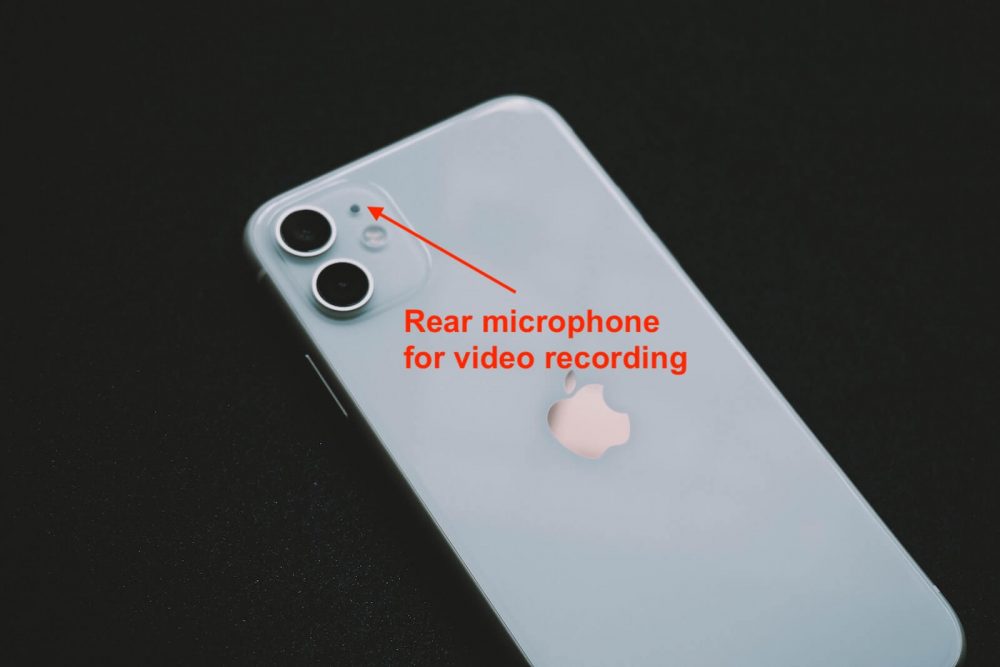Do you ever find yourself staring at the numbers and data on your iPhone analytics dashboard, feeling completely lost? If decoding iPhone analytics data seems like an impossible task, fear not! In this blog article, we’ll walk you through the process step by step, empowering you to understand and utilize the valuable insights hidden within your analytics. Whether you’re a business owner trying to optimize your app’s performance or simply a curious individual wanting to understand your iPhone usage patterns better, this guide on how to decode iPhone analytics data is exactly what you need. So, let’s dive in and unravel the mysteries of your iPhone analytics together.
Table of Contents
- 1 How to Decode iPhone Analytics Data
- 2 Frequently Asked Questions
- 2.1 What is iPhone analytics data?
- 2.2 Where can I find iPhone analytics data?
- 2.3 What kind of information can I gather from iPhone analytics data?
- 2.4 How can I decode iPhone analytics data?
- 2.5 What are some tips for interpreting iPhone analytics data effectively?
- 2.6 Can I use iPhone analytics data to improve my app’s performance?
- 3 Final Thoughts
How to Decode iPhone Analytics Data
Introduction
The era of data-driven decision making has taken over many industries, and mobile app development is no exception. As an iPhone app developer, understanding how users interact with your app is crucial for its success. This is where iPhone analytics data comes into play. By decoding this data, you can gain valuable insights into user behavior, identify areas for improvement, and make informed decisions to enhance the user experience. In this article, we’ll explore various aspects of iPhone analytics data decoding, providing you with the knowledge and tools necessary to optimize your app’s performance.
The Importance of iPhone Analytics Data
Understanding how users engage with your app can help you improve user experience, increase user retention, and ultimately drive app growth. iPhone analytics data provides valuable insights into user behavior, allowing you to:
- Identify popular app features: By analyzing user interaction data, you can determine which features of your app are most frequently used. This information can help you focus your efforts on enhancing and expanding those features, ensuring a seamless user experience.
- Track user acquisition and retention: Analytics data allows you to measure the effectiveness of your user acquisition strategies and track user retention rates. By identifying the sources of your most engaged users, you can optimize your marketing efforts and tailor your app to better meet their needs.
- Detect user drop-off points: Analyzing user behavior data can reveal where users are dropping off in your app. This knowledge is crucial for identifying pain points or bottlenecks in the user journey, enabling you to make targeted improvements and increase user retention.
- Measure app performance: Analytics data provides insights into various performance metrics, such as app crashes, load times, and responsiveness. Monitoring these metrics allows you to proactively address issues and optimize your app’s performance.
Setting Up iPhone Analytics
Before you can start decoding iPhone analytics data, you need to ensure that analytics is properly set up within your app. Here’s a step-by-step guide to getting started:
Step 1: Choose an Analytics Provider
There are several analytics providers available for iPhone app developers. Some popular options include:
- Google Analytics for Firebase: This platform offers robust analytics capabilities, including user engagement tracking, conversion tracking, and audience segmentation.
- Flurry Analytics: Flurry is a free analytics platform that provides insights into user behavior, demographics, and app performance.
- Apple App Analytics: Apple’s own analytics platform offers app usage and sales data, as well as user engagement metrics.
Step 2: Integrate the Analytics SDK
Once you’ve chosen an analytics provider, you’ll need to integrate their software development kit (SDK) into your app. This involves adding the necessary code snippets provided by the analytics provider to your app’s source code. Each analytics provider has its own integration instructions, so make sure to follow the documentation specific to your chosen platform.
Step 3: Set Up Events and User Properties
Events and user properties are key components of analytics data. Events represent user actions within your app, such as button clicks or screen views, while user properties capture demographic or behavioral information. Define the events and user properties that are relevant to your app and set them up within your analytics platform.
Analyzing iPhone Analytics Data
Once you’ve set up iPhone analytics and your app has been collecting data, it’s time to start analyzing that data to gain meaningful insights. Here are some key areas to focus on when decoding iPhone analytics data:
User Engagement Metrics
User engagement metrics provide insights into how users are interacting with your app. Some important user engagement metrics to analyze include:
- Session duration: Measure how long users spend within each session to understand overall app engagement.
- Screens per session: Determine the average number of screens users navigate through during a session to identify popular app paths.
- Time spent on specific features: Identify which features are capturing users’ attention and adjust your app’s focus accordingly.
Conversion Tracking
Conversion tracking allows you to measure the success of specific user actions within your app. Whether it’s making a purchase, signing up for a newsletter, or completing a level in a game, tracking conversions helps you understand user behavior and optimize your app. Key conversion metrics to analyze include:
- Conversion rate: Calculate the percentage of users who complete a desired action, such as making a purchase or subscribing to a service.
- Funnel visualization: Analyze the steps leading up to a conversion to identify potential drop-off points and optimize the conversion flow.
User Retention and Churn
User retention is a critical aspect of app success. Analyzing user retention metrics can help you identify factors that contribute to user churn and take corrective actions. Some user retention metrics to focus on include:
- Retention rate: Measure the percentage of users who return to your app after their initial visit. Identify patterns and trends to improve long-term user retention.
- Churn rate: Calculate the percentage of users who stop using your app over a specific period. Analyze reasons for churn and implement strategies to reduce it.
App Performance Metrics
App performance directly impacts user experience and satisfaction. By monitoring and analyzing app performance metrics, you can identify areas that need improvement and take necessary actions. Key app performance metrics include:
- Crash rate: Measure the percentage of app sessions that end in a crash. Investigate the causes of crashes and work on fixes to ensure a stable app.
- Load times: Analyze the time it takes for your app to launch or for specific screens to load. Optimize load times to provide a seamless user experience.
- Responsiveness: Measure how quickly your app responds to user input. Identify areas where responsiveness is slow and optimize performance.
Using Decoded Data to Enhance Your App
Decoding iPhone analytics data is just the first step. Now that you have valuable insights into user behavior, it’s time to leverage that data to enhance your app. Here are a few strategies to consider:
- User-centric design improvements: Use analytics data to identify pain points in the user journey and make design improvements that streamline the user experience.
- Feature enhancements: Focus on improving and expanding the features that users engage with most. This can help increase user satisfaction and retention.
- Targeted marketing campaigns: Leverage user demographics and behavior data to create targeted marketing campaigns that resonate with your most engaged users.
- Iterative development: Continuously monitor analytics data and use it to inform your development roadmap. Make data-driven decisions to prioritize features and improvements.
Decoding iPhone analytics data is a powerful tool for iPhone app developers. By understanding how users engage with your app, you can make informed decisions to optimize user experience, drive app growth, and improve overall performance. Utilize the insights gained from analyzing user behavior, conversions, retention, and app performance to unlock the full potential of your app. Embrace data-driven decision making and watch your app thrive in the competitive mobile app market.
Frequently Asked Questions
What is iPhone analytics data?
iPhone analytics data refers to the information collected by Apple about how users interact with their devices and apps. It includes various metrics such as app usage, device performance, battery usage, and more. This data is anonymized and aggregated to provide insights for app developers and improve user experiences.
Where can I find iPhone analytics data?
To access iPhone analytics data, you need to have an Apple Developer account. Once you have an account, you can sign in to App Store Connect and navigate to the “Analytics” section. Here, you will find detailed reports and metrics that can help you understand how users are engaging with your app.
What kind of information can I gather from iPhone analytics data?
iPhone analytics data provides valuable insights into user behavior and app performance. You can gather information such as active devices, app installations, app launches, user engagement, session duration, in-app purchases, crash reports, and more. This information can help you make data-driven decisions to enhance your app’s functionality and user experience.
How can I decode iPhone analytics data?
Decoding iPhone analytics data involves analyzing the metrics and understanding their implications. You can start by reviewing the various reports available in App Store Connect, such as the App Usage report or the Sales and Trends report. Look for trends, patterns, and anomalies in the data to identify areas for improvement or new opportunities. Additionally, you can compare different metrics, segment your audience, and use data visualization tools to gain deeper insights.
What are some tips for interpreting iPhone analytics data effectively?
Here are a few tips to help you interpret iPhone analytics data effectively:
- Focus on the metrics that align with your app’s goals and objectives.
- Compare current data with historical data to identify trends and changes over time.
- Segment your audience based on different criteria such as device type, location, or user behavior to understand unique user groups.
- Use data visualization techniques like charts or graphs to easily spot patterns and make data more digestible.
- Regularly analyze and iterate based on the insights gained from the data to continuously improve your app.
Can I use iPhone analytics data to improve my app’s performance?
Yes, iPhone analytics data can be a valuable tool to improve your app’s performance. By analyzing user behavior, engagement metrics, and crash reports, you can identify areas of improvement and optimize your app accordingly. For example, if you notice a high percentage of users abandoning your app during a specific screen, you can focus on enhancing the user experience in that area to reduce the churn rate and increase user satisfaction.
Final Thoughts
Decoding iPhone analytics data may seem overwhelming at first, but with the right approach, valuable insights can be gained. By understanding the different metrics and their significance, one can effectively analyze user behavior and improve the overall performance of an app. Start by familiarizing yourself with key terms like App Store Impressions, App Units, and Sales, as these metrics offer vital information about visibility, engagement, and revenue. Utilize data visualizations and compare results over time to spot trends and make data-driven decisions. Remember, analyzing iPhone analytics data is an ongoing process that requires consistent monitoring and adaptation. With practice and attention to detail, you can harness the power of analytics to optimize your app’s performance. So, if you want to unlock the potential of your iPhone analytics data, start by understanding the metrics and regularly assessing their impact on your app’s success.


